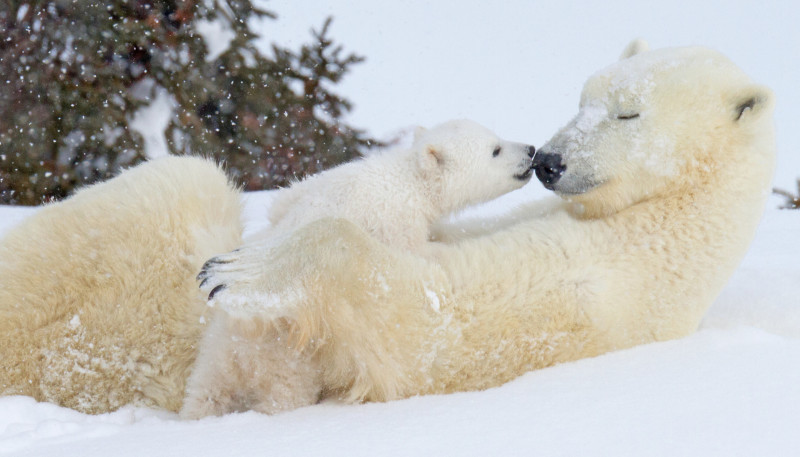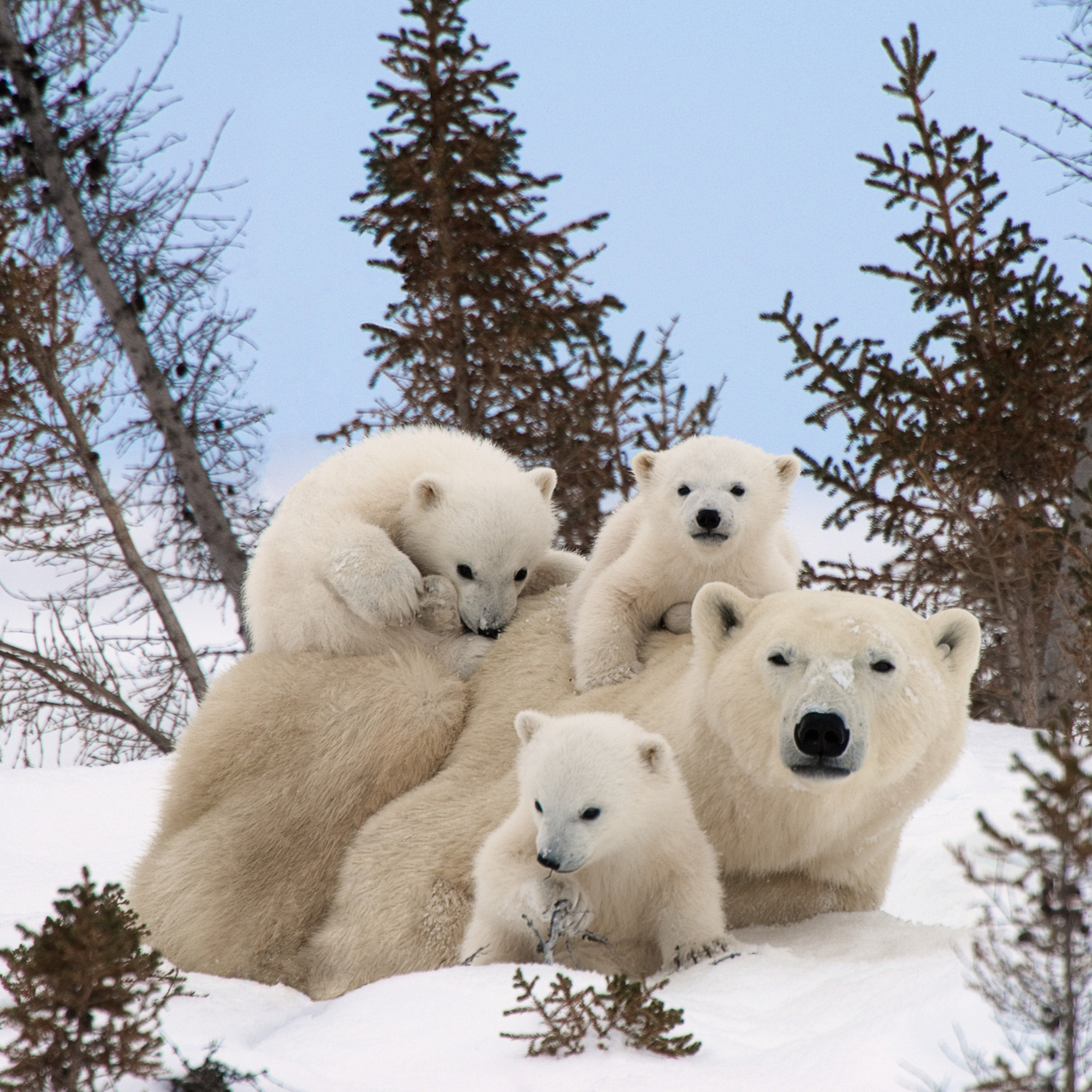Researchers and scientists have observed polar bear behavior and their social units for years. Understanding how they communicate and interact helps researchers determine the impacts different situations have on polar bears (global warming, oil exploration, etc.).
Polar Bear Behavior: Social Units
Social Units
There are only two social units between polar bears: mama and cub and breeding pairs.
Social Units
Mama & Cub
The highest level of social interaction is between the females and their cubs. This is because polar bear mothers are very attentive to their babies. Polar bear babies need large amounts of attention, including snuggle warmth, feeding, cleaning, etc.
Mama and baby stay together for around 2.5 years. During those two and a half years the cub is taught the ways of survival, such as identifying scents, hunting, and sheltering.
Breeding Pairs
A breeding pair is when a female and male polar bear come together to create a family. During mating season, breeding pairs stay together for several weeks. Once the female becomes pregnant, she is left to take care of her young on her own. Most adult females give birth once every three years, occasionally every two years if the bears have access to large quantities of food.

Fun Facts:
- Female polar bears can have up to 3 cubs at one time
- Mates are usually found between March to Late June
- Male polar bears are more aggressive during mating season

Communication
How Polar Bears Communicate:
- Sound
- Growl
- Communicates anger when a polar bear feels threatened. Used as a warning to another polar bear
- Hiss
- This occurs when a polar bear is challenged by another bear.
- Chuff
- This noise is made when the polar bear is feeling distressed.
- Growl
- Fighting
- Play
- Typically done between males or young cubs to practice hunting & defensive skills.
- Aggressive
- Head down and ears pinned back. Aggressive fighting is usually done between male polar bears during mating season when food caught by one is stolen by the other.
- Play
- Noses
- It is common for polar bears to communicate with their noses. This is a non-violent tactic used to communicate permission – much like we would ask for someone’s food before taking it, a polar bear will circle the food and then nudge the other bear’s nose with their nose.
- Head
- When a polar bear wants to play, they move their head from side-to-side
